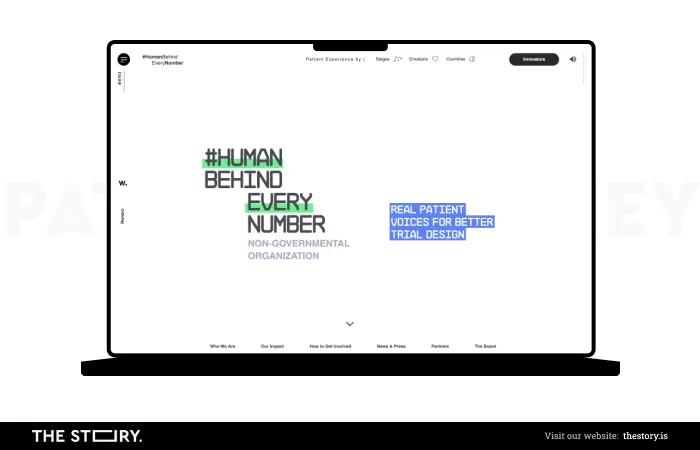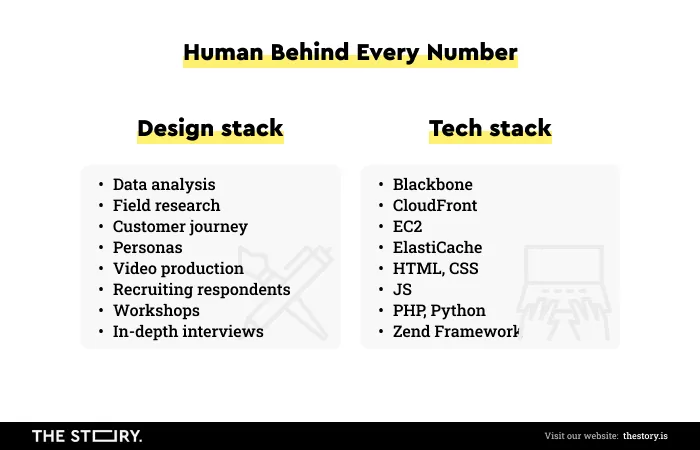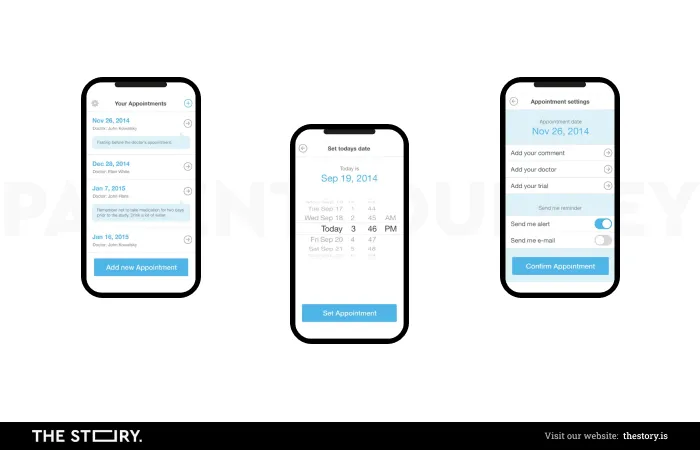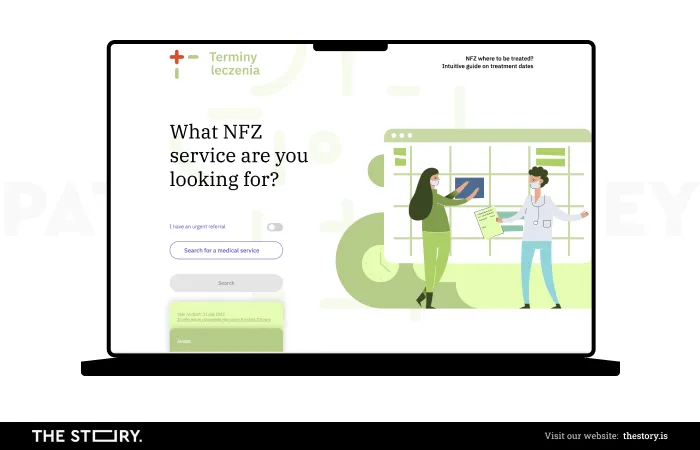The following "joke" fits like a glove to this article about the patient journey. It goes like this.
A woman comes to the doctor and sits down. After a moment, the doctor recognizes her face and asks in an unconvincing-sounding voice:
"It's been a long time since you've visited me. Why is that?"
"I was sick," the woman replied.
It's a paradoxical and terrifyingly unfunny joke. However, it reflects most patients' experiences, emotions, attitudes, and beliefs.
Avoiding treatment is not uncommon, and overlooking patients' feelings and evaluations in the treatment process is not unusual either (these are essential elements of the patient journey).
It's hardly surprising that the woman in the joke only shows up at the doctor's office when she's healthy. That is when she is strong and ready to face the healthcare system's challenges.
It's not that surprising, given our own and overheard experiences. And I don't mean only public facilities, but also private ones.
What does UX research look like in the healthcare industry? What are the methods for mapping the patient journey?
Let's find out.
Patient journey and patient experience research
Let's start with fundamental questions. Can we improve the patient experience? What is the patient journey? How can we research it? How can we map the patient journey, and with what tools?
Today, we're discussing instrumental studies in designing digital products (Healthtech) for the medical industry.

So, let's learn about patients' ills and how to discover them. We'll discuss UX research in the medical industry, or PX in the medical industry, and methods for mapping patient experience.
What is patient experience?
You may have heard of similar concepts, such as user journey, customer journey, and user experience. Whether we're talking about customer, user, or patient experience, we always mean the experience of a particular group of people developed as a result of interactions (metaphorically referred to as the journey)—interaction with a brand, digital product, hospital, clinic, infirmary, sanatorium, or a healthcare provider.
We mean the experiences created in all contact channels, in the so-called touchpoints, where this contact occurs. We mean physical contact (face-to-face) with personnel and contact with information media (digital or analog) and infrastructure.
In the case of patient experience, a touchpoint can be a web application, a mobile app, a reception desk, an infoline, an emergency room, a queue, or an office. Patient experience consists of visits to doctors' offices, hospitalizations, examinations, treatment procedures and indications, and therapeutic and restorative practices.
Patient experience is often defined as the sum of all experiences (interactions, emotions, impressions, sensations, perceptions, beliefs, and evaluations) that arise at the touchpoints during contact with healthcare providers.

With that said, the beginning of the PX initiates the search and selection of a facility. Favoring one facility over another is, from a patient experience research perspective, a decision, information that is extremely valuable and useful. That's because it allows us to understand our business's shortcomings and flaws (or advantages).
Patient experience research is valuable for improving the quality of service. It helps improve comfort, satisfaction, and speed of recovery and economize medical facility operations. Last but not least, it also helps design better, more functional, ergonomic, and satisfying digital products.
It's not just about applications that serve organizational matters but also applications that support the treatment stage. These applications are part of medical devices, helping a patient in recovery.
Recurring problems, discovered through patient experience research, are most often related to:
- Availability of medical services (e.g., waiting time for an appointment with a specialist, for a specialized examination, for a place in a specialized ward).
- Communication (e.g., the clarity of the language used by doctors, the personal culture of staff).
- The course of the treatment process (e.g., complications after treatment, the harmony of cooperation between different facilities).
- Attitude and behavior of medical staff (e.g., empathy, respect, and interest shown to patients)
- Quality of service (e.g., quality of food, cleanliness, sterility of rooms).
- Subjectivity — the inclusion of a patient in the treatment process (e.g., through reliable and comprehensive information about their condition, the expected results, and the risks associated with implementing a particular treatment method).
- A sense of security and purpose, as well as acceptance of measures (e.g., resulting from including the patient in the treatment process, making them a subject, not an object of treatment).
- Effectiveness (e.g., related to the testing speed and the scope of diagnostic tests).
- Ensuring mental, emotional, and physical well-being (e.g., providing psychological support).
The consequences of negligence, errors, shortcomings, and deficits in any of these dimensions, in the standard, quality, and manner desired by patients, are easy to imagine. Frustration, disappointment, fear, uncertainty, hostility, prejudice, distance, and distrust are the most common effects of a dysfunctional medical facility's operation.
However, the cost is not one-sided and also applies to a medical facility that loses:
- Image and reputation
- Effectiveness.
We cannot ignore patients' emotions, intellect, and perceptions. They translate directly into a facility's evaluation, loyalty to it, and opinions about it.
Mental and physical well-being is a link, an element, a goal, and a function crucial to understanding the essence of the patient experience. Achieving a high level of mental and physical well-being is, and certainly should be, a goal of any medical facility. To achieve it, it is essential to follow the patient journey.
Patient experience (along with clinical effectiveness and safety) is considered one of the three most essential elements in healthcare services and their quality.
Moreover, the patient experience positively influences the treatment process (its speed), clinical effectiveness, and patient safety.
What is a patient journey?
Patient experience research takes into account all stages of a disease. It begins with the first symptoms and ends with their disappearance.
The research starting point is to assume that the disease process, the process of recovery, is linear and resembles a journey, the goal of which is full recovery or health improvement.
It's a journey in which we can distinguish stages. Within them, we can identify places and moments where patients interact with personnel and experience procedures, norms (formal and informal, explicit and implicit), values, and goals.
Patient journey mapping is a tool for visually depicting experiences (functional and emotional) from the patient's perspective. It's used in healthcare research projects to understand patient's needs better.
It gives us a holistic view of the treatment process, the process of providing medical services, its critical stages, crucial procedures, and typical problems and effects.
Equally important is that the patient journey mapping research allows us to see the process and the patient flow, with all or almost all their dependencies.
It's a more effective tool than static analysis of single, context- and process-isolated touchpoints.
The purpose of mapping the patient journey is to diagnose, capture, and define the following:
- Emotions and feelings
- Motivations
- Resistances
- Attitudes (explicit and implicit)
- Opposites
- Facilities
- Observations
- Behaviors
- Added values
The knowledge gained through this tool allows designers of services and products (especially digital) to optimize the patient experience. That is extremely important. And why? Modern patients are transferring their consumer expectations to the medical services field. They expect to be shown interest in their problems. They choose (if they have the opportunity) facilities according to their preferences and values. In addition to medical assistance, they expect added values, especially related to relationships (attitude, care, subjective treatment).
They treat digital products (web apps, mobile apps) as previews, promises of care, and treatments that meet their expectations. Digital products are also vital touchpoints in building a relationship with a patient, and as we have already said, the latter particularly appreciates this value.
Stages of the patient journey
What stages of a patient's journey can we distinguish during patient journey mapping research?
Awareness stage
During this stage, patients become aware of their need for medical services and start to search for a healthcare provider. They can do that by browsing through the websites of their local healthcare providers or by taking advice from their community (e.g., family members).
Consideration stage
In this stage, patients start to compare their available options. They look at the benefits, reviews, and referrals or check whether their health insurance covers the desired service.
Access stage
In the access stage, patients start contacting their chosen healthcare providers and scheduling appointments. Patient engagement increases during this stage.
Service delivery stage
This stage is all about the services that we provide to a patient. These services can include doctor appointments, hospital check-ins and check-outs, and various treatments.
Ongoing care stage
The ongoing care stage involves all services provided to a patient after initial treatment, including helping them manage their condition or prevent it from occurring again.
What are the benefits of patient journey mapping?
Patient journey maps allow us to:
- Build and maintain relationships
- Make the patient experience more purposeful, predictable, rational, and understandable
- Diagnose problems and needs (functional and emotional)
- Harmonize the work, roles, and scopes of competence of individual employees
- Correct errors in service or care
- Enhance care, attention, and interest (emotional work)
- Improve the quality and effectiveness of treatment
- Improve and control reputation and image
- Understand emotions, attitudes, biases, expectations
- Meet expectations
- Indicate positive experiences, emotions, opinions
- Diagnose crucial touchpoints
- Find quick and usually simple solutions to problems (Quick Wins)
- Increase patients' sense of security and purpose.
Patient journey maps are a handy tool because of their wide range of benefits. They can be used to design services, procedures, standards, interactions, digital products, and analog solutions.
Methods of patient journey mapping
While there is no one universal map template, we can point out the constant (or frequently recurring) elements that should appear in every map, regardless of whether it applies to a:
- Public or private facility
- Diagnostic or therapeutic facility
- General or specialized facility
- Small, medium, or large facility.
Each time, the patient journey map should be adapted to the needs and goals of the research.

Journey maps
The most typical components of a map primarily include the following:
- Timeline covering experiences before deciding on a treatment, during it, and shortly after it
- An axis of the emotional journey
- A functional journey axis includes office visits, examinations, hospitalizations, etc.
- An axis with touchpoints detailing their location, method, and nature of contact
- An axis of tasks that patients and personnel have to perform
- An axis of the course and stages of disease (if we map the patient journey of specialized wards, such as oncology)
Another way of creating a map is to highlight within it:
- Tasks to be performed by a patient at a given stage of treatment, but also personnel's tasks at a given touchpoint.
- Goals to be achieved by patients, personnel, and facility.
- Limitations regarding the most critical issues — from purely medical to administrative and economic.
- Actors, that is, people, roles, and professions with whom the patient has contact.
- An axis of the emotional journey.
- An axis of the physical journey (in this regard, storyboards are a helpful tool, which I will write about in a moment :) ).
- Touchpoints with personnel and tools, both strictly medical equipment and equipment that supports treatment (e.g., apps that assist the patient in treatment).
Patient personas
A research team can more accurately capture the specific needs of a particular group by typifying and categorizing patients. Variables such as gender, age, education, and wealth are classic and obvious sources of differences in expectations and attitudes.
However, no less important issues are:
- Attitudes toward health and illness
- Attitudes toward a facility, doctors, medical staff
- Involvement in the treatment process (also understood as interest, increasing knowledge about the disease, and concern for health)
- Emotions aroused by diseases, facilities, doctors, other patients, methods of treatment
- Quality of medical knowledge and its scope, especially concerning myths, stereotypes, and prejudices
- General attitudes toward healthcare.
Creating personas of patients, and therefore model types, allows us to capture their uniqueness, specificity, complexity, and diversity of behavior, emotions, needs, and expectations.
Personas allow us to address medical offerings more individually and create products and services that meet a specific constellation of expectations.
Storyboards
Storyboards are simplified drawings and frames showing typical patient interactions with a facility and its personnel. They're a tool for visualizing situations, their course, and their sequence. They provide insight into the specifics of the interactions at the touchpoints.
Storyboards are eagerly used for user interface prototyping and process modeling. As I mentioned above, they allow us to visualize the appearance, behavior, and actions of the representatives of each Persona.
The effectiveness of this method depends on the following:
- The level of detail of images
- The introduction of a text layer (description, dialogue, commentary)
- Expressing the emotions that accompany the interaction
- The number of frames
- Considering the changes taking place over time
Storyboards are treated as an auxiliary, complementary method rather than a stand-alone one. Nevertheless, their cognitive qualities—stimulating imagination, empathy, and expanding understanding of the situation from the patient's perspective—are very helpful in designing services and interactions, both stationary and digital.
Designing digital tools based on patient journey mapping
UX research—the medical industry has known it for a long time. Patient experience research in digital health is becoming increasingly popular, even indispensable. It's necessary if we want to create a web, mobile app, or other high-tech digital product. And why?

No digital product, even the most innovative, health-oriented one, won't attract the interest and acceptance of users and won't become their daily tool if it doesn't meet their expectations.
The functional aspect of a digital product can't dominate the emotional element related to the added value or sympathy it should inspire.
Excessive focus on technical, medical, and therapeutic issues usually results in low satisfaction with use and rapid abandonment.
In designing digital products for the medical (healthtech) industry, aesthetic and emotional experiences are equally important, as is the knowledge related to the product's role, function, and status in the treatment process.
Using a digital product should be a source of satisfaction and pleasure. It should foster a sense of security, care, concern, and interest.
Patient journey. Summary
We can only create a modern digital product with an awareness of the emotional needs of patients and future users.
Patient experiences at crucial touchpoints (and interaction with a web or mobile application are certainly such, etc.) should be discovered through adequate research methods.
Patient journey mapping, personas of patients, and storyboards are some of the most popular methods.
When conducting UX research in the medical industry and designing digital products, it is worth remembering that the most valuable research material is obtained from close, direct personal contact with patients.
Apart from analyzing clinical data, qualitative research is one of the best ways to discover the needs, concerns, goals, and methods that patients manifest and expect. Qualitative data enables us to better capture the patients' emotions, experiments, and perspectives.





